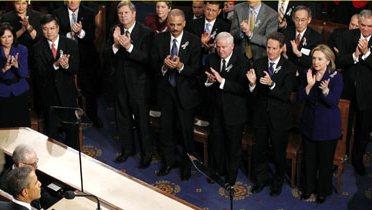Executive Summary
When Barack Obama selected Hillary Clinton to be Secretary of State, he not only chose an individual with “star” status, he placed her in the preeminent cabinet post. The Secretary of State is a veritable press magnet and this very fact sparked a surge of speculation that tensions and rivalries would likely follow. [i] But early in her tenure, one close observer of the Washington political scene opined: “She has about as low a news-making profile as is possible for someone who is arguably the most famous woman on the planet.”[ii]
Underlying that judgment are certain assumptions, e.g., that someone who had already achieved celebrity status before joining the cabinet would naturally continue to receive extensive coverage, and that, irrespective of his or her previous renown, the occupant of such a high-profile position would command greater coverage than the holder of a less prominent office. For the most part, though, presidents have little to fear in terms of being upstaged. A Midwestern farmer may know that Tom Vilsack is the Secretary of Agriculture, but precious few other Americans will even have heard of him.
What determines the amount of press coverage that cabinet officers receive? Do they labor in obscurity? Does a particular cabinet position affect the coverage they receive? Do cataclysmic events shine a brighter light on some positions? This paper examines the extent to which the visibility of cabinet members reflects an array of such influences by analyzing New York Times coverage of 357 cabinet officers from 1897 to 2006. The analysis shows that news coverage has been sharply differentiated between members of the Inner and Outer Cabinets; that political circumstances, personal attributes, and service characteristics matter; and that today’s cabinet members are far less likely to dominate the coverage they do receive.
[i] During the 2008 transition, it became widely known that President-elect Obama was impressed by Doris Kearns Goodwin’s (2005) Team of Rivals. Thus, keeping Republican Robert Gates on as Secretary of Defense and nominating Hillary Clinton to be Secretary of State provided ample fodder for pundits and beat reporters alike.
[ii] Ben Smith, “Hillary Clinton Toils in the Shadows,” Politico. June 23, 2009.



